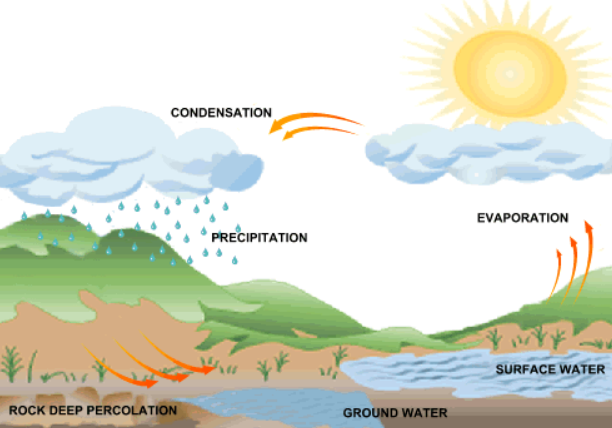The title is not clickbait and I will explain why
Droughts leading to heavier rain events sounds paradoxical but it is true. Before I dive into my explanation though, I will elaborate on some of the mechanisms that drive precipitation events.
Formation of Precipitation
Precipitation occurs when moisture is elevated by wind currents, evaporation, or transpiration, and subsequently gathers around a 'nuclei'. The nuclei is usually a tiny particle of ice, around which water molecules can condense into a liquid form, though airborne dust particles can serve the same purpose.
The droplet is suspended in the air as long as it is small enough for the updrafts and wind currents to keep it aloft. Once the droplet accumulates enough condensation and becomes too heavy, it will plummet towards the Earth as rain, or as snow, hail, or sleet if temperatures are cold enough.
How is the blog post title not clickbait?
If rain development depends on moisture, why would drought contribute to heavier rain? It comes back to that factoid about raindrops requiring a nuclei.
When drought occurs, the Earth's surface becomes drier, plants may die off, and there's not as much moisture clinging to the dirt particles. Less moisture means they don't stick together as much, and they have less mass. As a result, the soil becomes much easier for wind to scoop particulate off of the ground and loft it into the atmosphere. (Fun fact: airborne microplastics can also facilitate condensation and cloud formation.)
More dust particulate in the air means that there's more opportunity for moisture to begin condensing. This may lead to easier cloud formation, and higher density of water droplets within those clouds. The more dense the clouds, the greater the number of droplets, and the greater amount of rain there will be to fall in a single event.
Now, heavier rains may sound like a good thing at first, especially in relation to drought-stricken areas, but it is not so.
When the atmospheric dust can hold back more water droplets at a given time, that contributes to longer periods between bouts of precipitation. Additionally, when the atmosphere does finally relinquish its stored precipitation, a greater amount of rain falls all at once. As the ground often can't absorb a ton of water if it all comes at once, that heavier rain leads to flash floods, which can actually damage and contaminate water sources, not to mention damage property.
As the Earth steadily heats up, this will inevitably lead to more intense droughts, which can fuel the issue of atmospheric dust even further. A warmer atmosphere also means that the air can hold more moisture before it falls, amplifying the issue of more intense rains.





Great post, Ayla! It’s interesting how droughts can lead to heavier rainfall due to more dust in the air. Your explanation of how dust helps form clouds makes sense, but as you mentioned, the intense rain can cause flash floods and damage. This really shows how climate change is making things more unpredictable and challenging to manage.
ReplyDeleteThank you for the detailed explanation of this phenomenon. I have heard about heavier rain, but I had no idea how it actually works. Now I do! Thanks Ayla
ReplyDeleteYour click bate worked -- I appreciate the way you carefully explain this complex process.
ReplyDelete